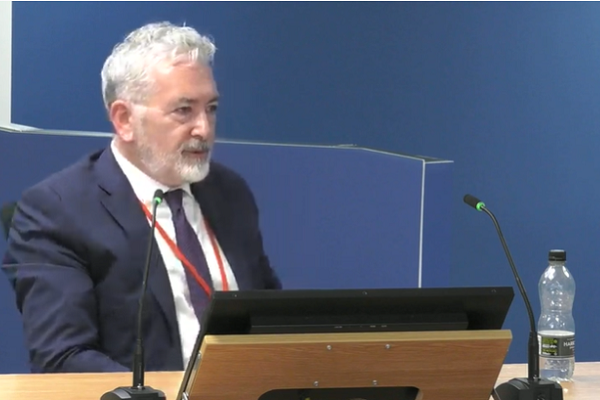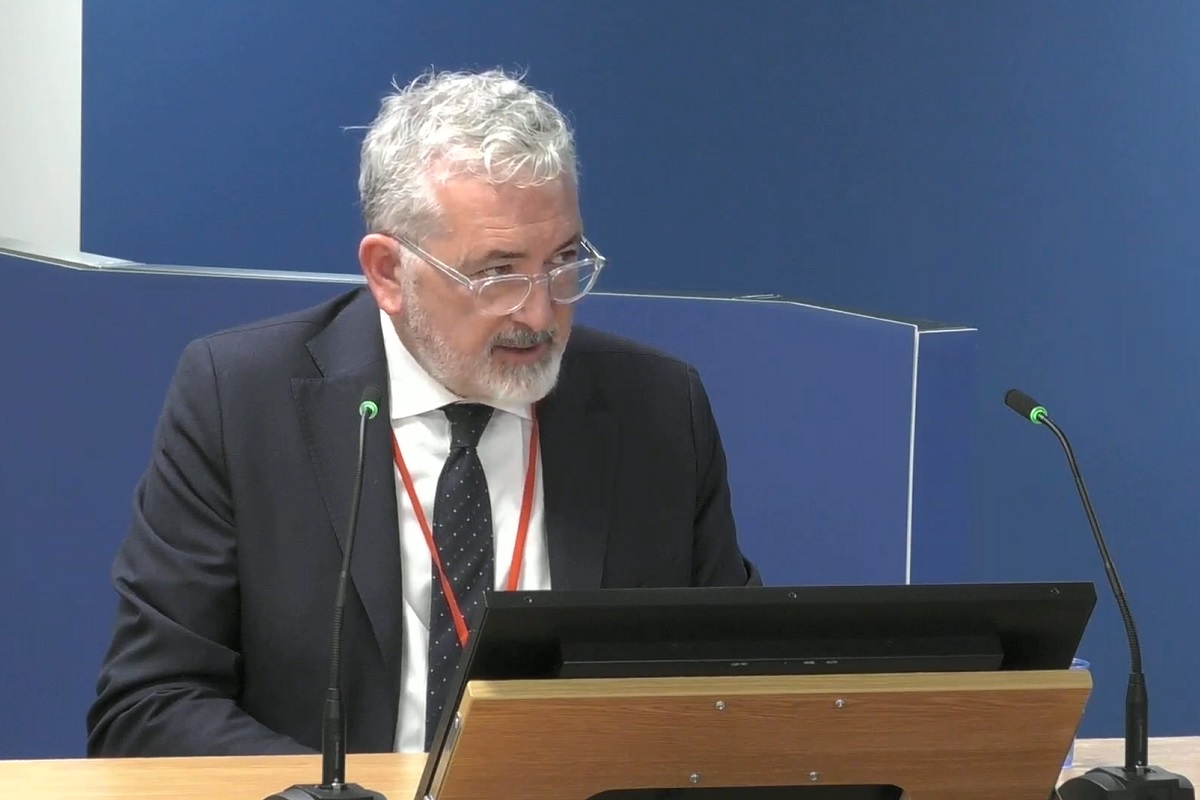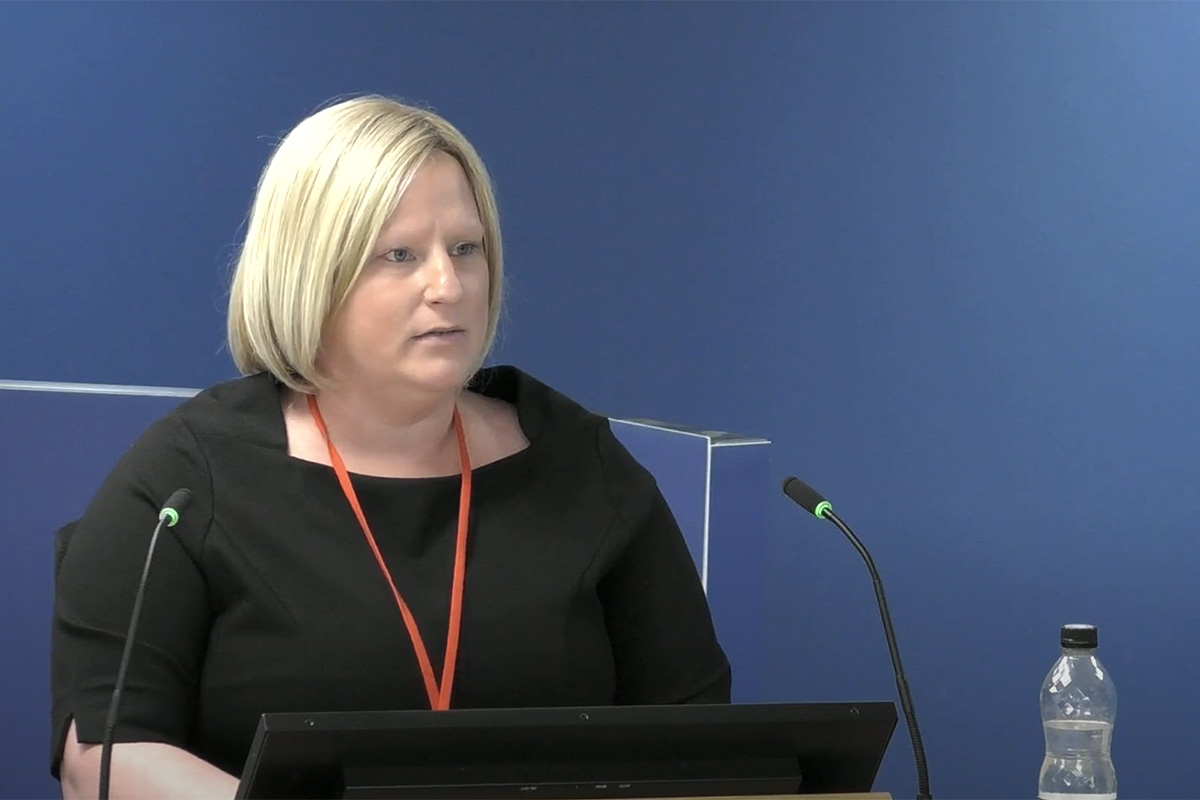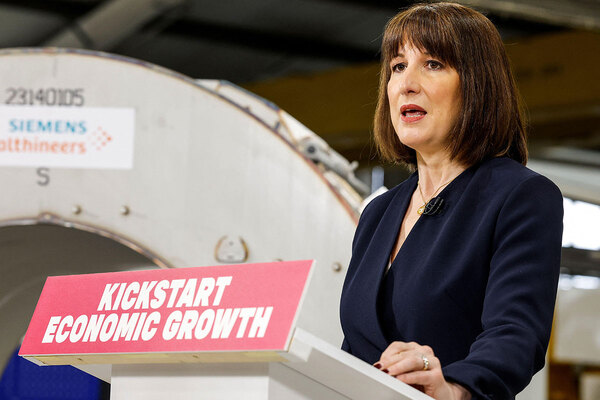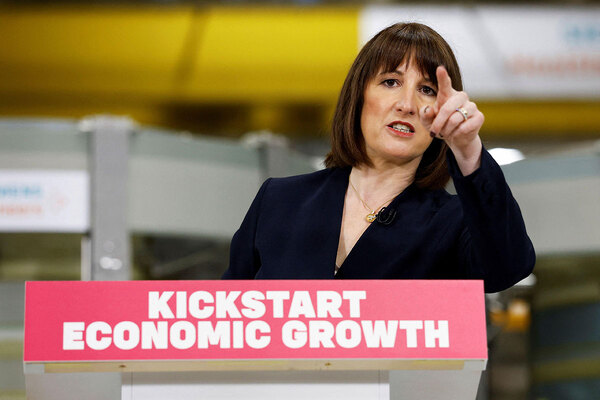Chief executive of KCTMO denies ‘keeping the board in the dark’ about fire safety failings
The former chief executive of Kensington and Chelsea Tenant Management Organisation (KCTMO) has denied “keeping the board in the dark” about fire safety issues.
Robert Black, who served as chief executive of the management company from 2009, was today asked to account for several instances where he appeared to fail to paint the full picture of fire safety failures at the organisation.
In one such instance, KCTMO had been served with a deficiency notice by the London Fire Brigade due to safety concerns about Adair Tower – a tower block around a mile from Grenfell, which KCTMO managed – on 12 October 2015.
On 31 October, just 19 days later, the block suffered a fire that resulted in a full evacuation and smoke inhalation injuries to several tenants when smoke spread through the stairwells.
But the inquiry saw today that he approved a draft note to the board about the fire on 4 December 2015, which made no reference to the fact that a deficiency notice had been issued before the fire.
“Can you explain why you were giving the board a version of events that was so potted it even omitted the vitally important reference to the deficiency notice of the 12th of October?” asked Richard Millett, lead counsel to the inquiry.
“I can’t explain it,” Mr Black said.
“You were keeping the board in the dark,” said Mr Millett.
“No I didn’t, wouldn’t do that,” Mr Black replied.
Earlier, like many senior KCTMO witnesses, Mr Black was asked about a failure to carry out safety repairs identified as necessary by fire risk assessments – with a backlog of 1,400 actions in 2014.
This was gradually reduced across the next three years, but at the time of the Grenfell Tower fire there were still 287 that had been outstanding for a number of months, with 128 outstanding for more than a year.
Citing these figures, Mr Millett asked: “Will you agree with me that the TMO, of which you are the CEO, therefore for this purpose its embodiment, did not make suitable and sufficient assessment of the risks, to which… your residents were exposed at Grenfell Tower?
“I have to accept that,” Mr Black replied.
Asked whether the failure resulted from the “age and condition” of the 9,600 council homes managed by KCTMO made meeting the legislative requirements impossible, Mr Black said this “could be an issue”, explaining that government investment in council stock had been limited until self-financing agreements were struck in 2012.
Mr Millett asked if the issue was “your inability or unwillingness to resource properly fire safety measures appropriate to the age and size of your stock”, which Mr Black said he did not accept.
“I’m suggesting that you knew you were not meeting the legislative requirements but never asked for any more money,” Mr Millett said.
“I’m not sure of that,” Mr Black responded.
Earlier, the inquiry had seen that Mr Black commissioned a health and safety consultant, Matt Hodgson, to review its performance, following concerns raised in an audit by the Royal Borough of Kensington and Chelsea (RBKC).
This report raised major issues, including difficulties completing issues raised by fire risk assessment reports, but Mr Black did not mention this in a report to the board.
“Why did you not mention any of the issues [he raised] particularly about the potential exposure of the business to corporate and personal liabilities?” Mr Millett asked.
“I can’t recall,” Mr Black replied.
As the inquiry has previously established, KCTMO appointed sole trader Carl Stokes to assess all 650 of its blocks with ‘common parts’.
He was given contracts for the high and low-risk blocks without formal procurement, having won the contract to assess medium-risk properties in 2010.
“Just standing back, did you yourself ever stop and ask yourself… how a one-man band could possibly perform the job of fire risk assessor for 650 buildings?” asked Mr Millett.
“I believe the programme is over three years,” Mr Black said. “And therefore, probably the assumption was that in that three years, he said he could do it.”
Managing this process fell to Janice Wray, head of health and safety at the organisation, who has previously said that she found it difficult to manage alongside her other responsibilities.
Asked how she was expected to “read and digest all these reports and then direct and supervise the progress of recommended actions, as well as do the rest of her job”, Mr Black responded: “It was her job.”
“Let me just ask you about the culture,” said Mr Millett. “It’s not a word I would use lightly, but was there an atmosphere perhaps in the TMO of encouraging people to get on with the job as best they could and don’t ask for any more money?”
“I think it was an atmosphere of people knowing how much money there was, in a time of austerity, where across the country, everything has been cut,” Mr Black replied. “So I think the culture is, you recognise that there’s no magic pot of money to actually make everything perfect. And that’s the case within social housing, local authorities, that tends to be what happens.”
Earlier, Mr Black was asked about an episode in 2010 where residents raised concerns about Grenfell Tower’s smoke ventilation system following a minor fire in the block where it failed, resulting in injuries to three residents.
A residents group, the Grenfell Tower Leaseholders Association, wrote to Mr Black asking for an independent investigation and another manager responded telling them the system was “working at the time of the fire” and implying that the issue was that firefighters did not operate the manual system.
“Would you agree that… the three paragraphs of this letter under fire alarm and health safety are really an exercise in concealment and half truth?” Mr Millett asked.
Mr Black said that he had not seen a report on the ventilation system at the time the letter was sent and that he did not know.
“I’m inviting you to accept that [this] is an attempt to blame the fire brigade and pin any human error on their part rather than the defective condition of the [smoke ventilation] system,” Mr Millett said.
“I’m sort of upset reading this and can’t explain it,” Mr Black replied.
The inquiry continues.
Sign up for our weekly Grenfell Inquiry newsletter
Each week we send out a newsletter rounding up the key news from the Grenfell Inquiry, along with the headlines from the week
Already have an account? Click here to manage your newsletters
